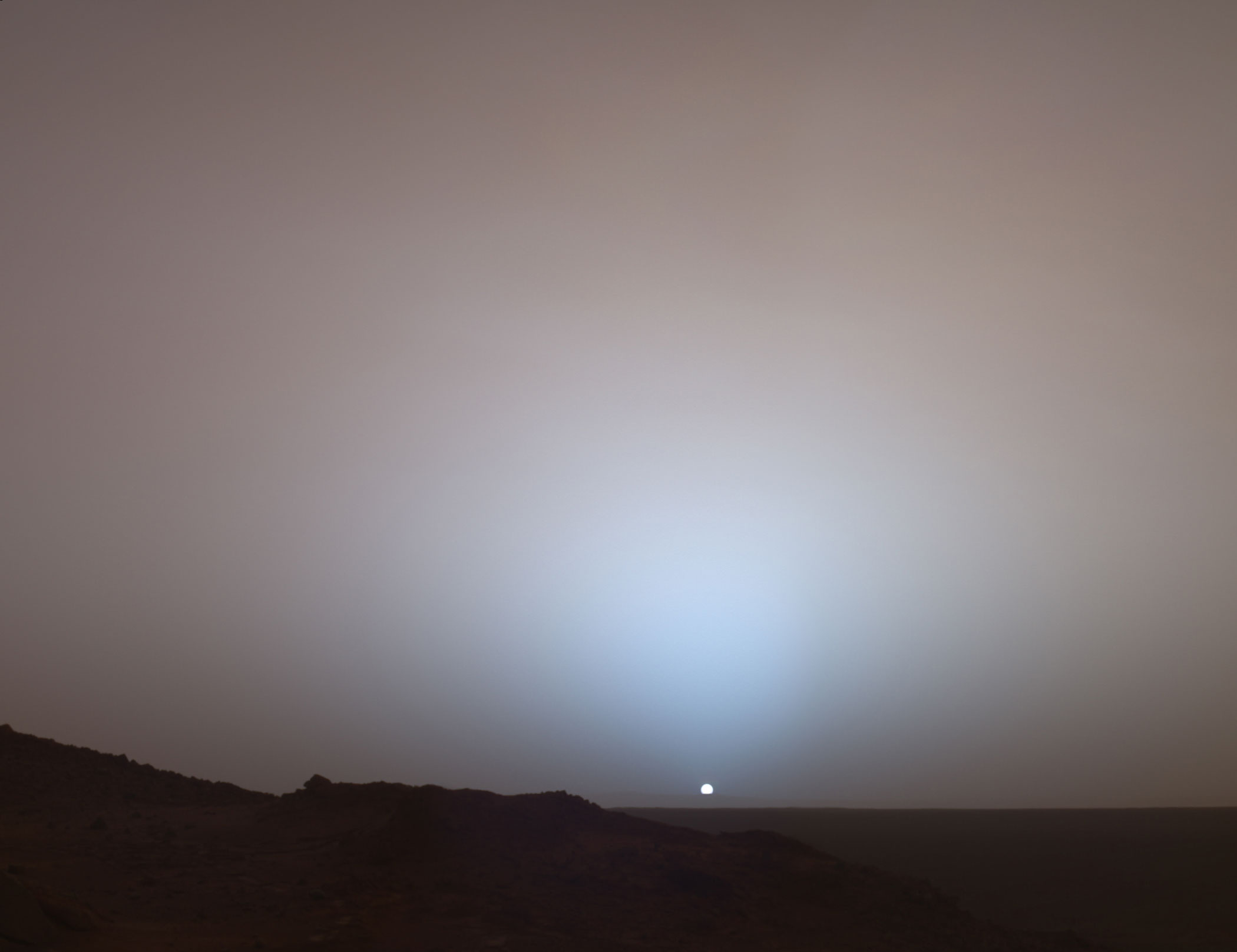
This is a sunset as no human being has ever seen it: on Mars. It was snapped by NASA’s “Spirit” rover on 19 May 2005. It shows the sun dipping below the rim of the 166-kilometre-diameter Gusev Crater, believed to have been a water-filled lake billions of years ago when Mars was a version of Eden.
At the distance of Mars, the Sun is about two-thirds the size it appears from Earth and barely half as bright. It appears white because the Martian carbon dioxide atmosphere – only one per cent the thickness of its terrestrial counterpart – is too insubstantial to redden it.
Twilight on Mars can last for about two hours. This is because, even after the Sun has dipped below the horizon, sunlight is scattered from fine dust particles hoisted high into the atmosphere by the planet’s violent weather. A similar effect is often seen after major volcanic eruptions on Earth.
It is a fair bet that humans will one day follow their robot emissaries to the Red Planet. When they do, they will need spacesuits because of the lack of air and the bitter cold – on a hot summer’s day the thermometer barely registers zero degrees Celsius. They will also have to limit their time on the surface because Mars, without a magnetic shield to protect it, is exposed to a deadly sleet of particle radiation from the Sun. Their reward will be to witness not only the sun set on another world but, later, in the depth of the Martian night, something even more humbling: Earthrise.
Marcus Chown’s latest books are Tweeting the Universe and Solar System, both published by Faber

